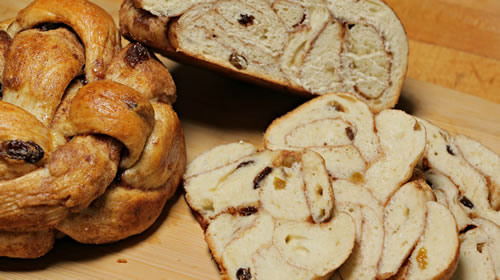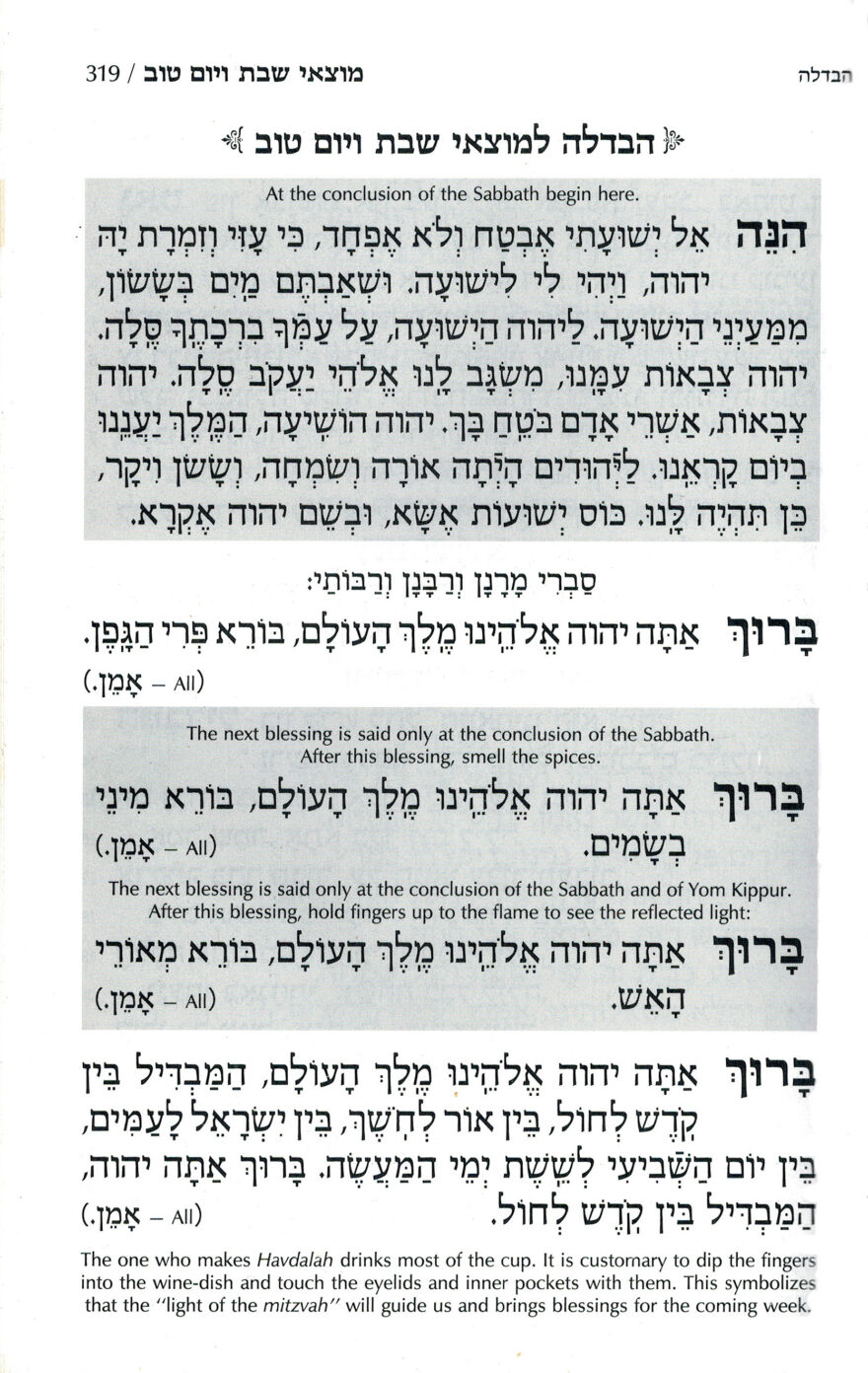Hello, welcome to Flight #5784We are prepared to take off into the New Year.Please make sure your Attitude and Blessings are secured and locked in an upright position.All self-destructive devices should be turned off at this time.All negativity, hurt and discouragement should be put away.Should we lose Altitude under pressure, during the flight, reach up and pull down a prayer. Prayers will automatically be activated by Faith. Once your Faith is activated you can assist other passengers.There will be NO BAGGAGE allowed on this flight.The Captain (G-d) has cleared us for takeoff.Destination: GREATNESS.L’shana tovah u’metukahשנה טובה ומתוקה Before Rosh Hashanah starts be sure to dip your iPhone into honey for a sweet year and after Rosh Hashanah 2nd Day go out and get a Kosher Cell phone. |
A Few Health Tips:First Tip: Think Sampler SizesIn order to taste everything at the Rosh Hashanah table, have a small amount of everything – like apples and honey and apple challah; have just one matzo ball in the soup; enjoy the brisket in moderation; and have the fruit compote instead of the honey cake.Second Tip: Lighten up the dishes that are rich and at the same time particularly desirable and comforting (and easy to over eat).Third Tip: Bring in your own Family Traditions such as Lettuce Raisin Celery Salad (Let Us Have A Raise in Salary.) , Macaroni Salad (Blessing for Matrimony) or Bran, Nooch [Nutritional Yeast] and Curry (Blessing for a Brand New Career) במבה Bamba (Blessing for Children) May it be Your will that we have lots of Israeli Children that like Bambas. |
|
From chabad.org Rosh Hashanah Eve MealRosh Hashanah Seder According to Ashkenazi CustomDownload the Rosh Hashanah Torah Tidbits .PDF: KiddushBefore starting the Rosh Hashanah meal, we sanctify the holiday by reciting the kiddush over a cup of wine or grape juice. Click here for the Hebrew text of the kiddush.1 New FruitOn the second night of Rosh Hashanah, a “new fruit,” i.e., a seasonal fruit which we have not yet tasted since its season began, should be present on the table when the holiday candles are kindled and during the kiddush. While reciting the Shehecheyanu blessing after candle-lighting and after the kiddush, one should have the new fruit in mind.2 This fruit is eaten following the kiddush, before washing for bread. Before partaking of the fruit we say the following blessing:
Challah in HoneySee:Round Challah RecipeImmediately following the kiddush (and on the second night, the eating of the new fruit), we perform the ritual washing for bread, after which we say the following blessing:
When everyone has returned to the table, we raise the two challah loaves and recite the Hamotzie blessing:
Cut the challah, dip it in honey (some also dip it in salt), and have a bite. Pass around pieces and make sure everyone does the same. |
|
| BEETROOT
Sephardim generally perform the yehi ratson with spinach or Swiss chard, although the leafy part of the beet may also be used. In English translation, the stress is on our desire to “beat” those who intend to do us harm. “Silka” is the Hebrew word referring to the greens mentioned above. The verse that begins “yistalku oyvekha” also expresses the wish that the enemies of the Jews will be removed.
As we bite this beet, may those who in the past have beaten us or sought our harm beat to cover in the coming year. |
|
2 Recipes for Lamb’s Head (Untested)“Rosh Hashannah” literally means head of the year. The sheep or fish head symbolizes the hope that each of us will be at the head of whatever we do, rather than at the tail end.
Rosh Hashanah meals often include apples and honey, to symbolize a sweet new year. Various other foods with a symbolic meaning may be served, depending on local minhag (“custom”), such as cooked tongue or other meat from the head of an animal (to symbolize the “head” of the year). |
Simple Cooked Quince Recipehttps://www.pritikin.com/quince-fruit-fall-food
|
From aish.com Symbolic Foodshttp://www.aish.com/h/hh/rh/guide/48939217.html
You can also use other foods and make up your own “May it be Your will…” For example, eat a raisin and celery, and ask God in the coming year for a “raise in salary” (raisin celery)! Macaroni Salad (Blessing for Matrimony) or Bran, Nooch [Nutritional Yeast] and Curry (Blessing for a Brand New Career) במבה Bamba (Blessing for Children) May it be Your will that we have lots of Israeli Children that like Bambas. |
|
From chabad.org Rosh Hashanah Seder According to Sephardic Customhttp://www.chabad.org/holidays/JewishNewYear/template_cdo/aid/905170/jewish/Rosh-Hashanah-Seder.htm |
|
Before Rosh Hashanah, gather the following items:
After chanting kiddush, washing, and breaking bread, the following foods are eaten:תמריםDates. Related to the word תם—to end.Take a date and recite:בָּרוּךְ אַתָּה ה’ אֱלֹהינוּ מֶלֶךְ הָעוֹלָם בּוֹרֵא פְּרִי הָעֵץ
|
סלקאBeets. Related to the word סלק—to depart.Take a beet and say:יְהִי רָצוֹן מִלְּפָנֶיךָ ה’ אֱלֹהינוּ וֵאלֵֹהי אֲבוֹתֵינוּ, שֶׁיִּסְתַּלְּקוּ אוֹיְבֵינוּ וְשׂוֹנְאֵינוּ וְכָל מְבַקְשֵׁי רָעָתֵנוּMay it be Your will, Lord our G‑d and the G‑d of our fathers, that our enemies, haters and those who wish evil upon us shall depart.קראGourd. Related to the word קרע—to rip apart, and also קרא—to announce.Take a gourd and say:יְהִי רָצוֹן מִלְּפָנֶיךָ ה’ אֱלֹהינוּ וֵאלֵֹהי אֲבוֹתֵינוּ, שֶׁתִּקְרַע רוֹעַ גְּזַר דִּינֵנוּ, וְיִקָּרְאוּ לְפָנֶיךָ זָכִיּוֹתֵינוּMay it be Your will, Lord our G‑d and the G‑d of our fathers, that the evil of our verdicts be ripped, and that our merits be announced before you.רימוןPomegranate.Take the pomegranate and say:יְהִי רָצוֹן מִלְּפָנֶיךָ ה’ אֱלֹהינוּ וֵאלֵֹהי אֲבוֹתֵינוּ, שֶׁנִּהְיֶה מְלֵאִים מִצְוֹת כָּרִמּוֹןMay it be Your will, Lord our G‑d and the G‑d of our fathers, that we be filled with mitzvot like a pomegranate [is filled with seeds].תפוח בדבשApple and Honey.Dip an apple in honey – some have the custom of using an apple cooked with sugar – and say:יְהִי רָצוֹן מִלְּפָנֶיךָ ה’ אֱלֹהינוּ וֵאלֵֹהי אֲבוֹתֵינוּ, שֶׁתְּחַדֵּשׁ עָלֵינוּ שָׁנָה טוֹבָה וּמְתוּקָה כַּדְּבָשׁMay it be Your will, Lord our G‑d and the G‑d of our fathers, that You renew for us a year good and sweet like honey.ראש כבשRam’s Head (or the head of another kosher animal or fish4).יְהִי רָצוֹן מִלְּפָנֶיךָ ה’ אֱלֹהינוּ וֵאלֵֹהי אֲבוֹתֵינוּ, שֶׁנִּהְיֶה לְרֹאשׁ וְלֹא לְזָנָבMay it be Your will, Lord our G‑d and the G‑d of our fathers, that we be a head and not a tail.(The following is added only over the head of a ram:וְתִזְכֹּר לָנוּ עֲקֵדָתוֹ וְאֵילוֹ שֶׁל יִצְחָק אָבִינוּ בֶּן אַבְרָהָם אָבִינוּ עַלֵיהֶם הַשָּׁלוֹם…And You shall remember for us the binding and the ram of our forefather Isaac, the son of our forefather Abraham, peace be onto them.) |
Round Challah RecipeThe Secret of ChallahCinnamon Raisin ChallahBy Rachel Grossbaum https://www.chabad.org/recipes/recipe_cdo/aid/3435337/jewish/Cinnamon-Raisin-Challah.htm Ingredients:
Egg Wash:
Cinnamon-Sugar Topping:
Directions:
|
|
|
https://pjlibrary.org/beyond-books/pjblog/august-2018/how-to-braid-a-round-challah-for-rosh-hashanah
Yields: 6 large challahs |
|
Elegant Pomegranate Challah Rolls For Rosh Hashanah with Full Instructions לחמניות רימון לראש השנה |
|
Delicious Vegan Recipes for a Happy Jewish New Year
Baked ‘Fish’ Cakes With Lemon Herb Mayo [Vegan]Dairy Free | Kid-Friendly Vegan
|
|
Calories: 223 Serves: 8-10
IngredientsFor the “Fish” Cakes:
For the Herb Lemon Mayo:
|
|
Preparation
|
|
NotesThe cake mixture without the panko crumbs makes for an excellent “tuna” sandwich filling. Nutritional InformationTotal Calories: 1783 | Total Carbs: 362 g | Total Fat: 57 g | Total Protein: 66 g | Total Sodium: 4358 g | Total Sugar: 28 g Per Serving: Calories: 223 | Carbs: 45 g | Fat: 7 g | Protein: 8 g | Sodium: 545 mg | Sugar: 4 g |
|
Potato Kugel Cups [Vegan]Dairy Free | Oil Free / Low Fat Vegan
Serves: 18 Ingredients
Preparation
|
|
Crispy Breaded Chickpea Cutlets in Mushroom Gravy [Vegan, Gluten-Free]Dairy Free | Gluten-free Recipes | Grain Free Recipes | High Carb Vegan | High Protein Vegan | Wheat Free By Amy Lyons https://www.onegreenplanet.org/vegan-recipe/crispy-breaded-chickpea-cutlets-in-a-savory-mushroom-gravy/
Serves: 3 IngredientsFor the Chickpea Cutlets:
For the Breading:
For the Mushroom Gravy:
PreparationTo Make the Chickpea Cutlets:
To Make the Mushroom Gravy:
Nutritional InformationTotal Calories: 805 | Total Carbs: 74 g | Total Fat: 37 g | Total Protein: 36 g | Total Sodium: 3294 g | Total Sugar: 9 g (Per Serving) Calories: 268 | Carbs: 25 g | Fat: 12 g | Protein: 12 g | Sodium: 1098 g | Sugar: 3 g |
|
Cauliflower Pot Roast [Vegan]Dairy Free | Vegan by Cruelty Free Family http://www.onegreenplanet.org/vegan-recipe/cauliflower-pot-roast/
IngredientsFor the Pot Roast:
For the Gravy:
PreparationTo Make the Pot Roast:
To Make the Gravy and Serve:
Nutritional InformationTotal Calories: 2018 | Total Carbs: 275 g | Total Fat: 102 g | Total Protein: 90 g | Total Sodium: 3741 g | Total Sugar: 59 g |
|
Cinnamon Apple Chunk Cake [Vegan]Dairy Free | High Carb Vegan | Vegan By Lindsey Auerbach https://www.onegreenplanet.org/vegan-recipe/cinnamon-apple-chunk-cake/
IngredientsFor the Cake:
For the Topping:
Preparation
Nutritional InformationTotal Calories: 3359 | Total Carbs: 391 g | Total Fat: 188 g | Total Protein: 52 g | Total Sodium: 3295 g | Total Sugar: 190 g |
|
From chabad.org Honey-Free Rosh Hashanah RecipesOn Rosh Hashanah, most Jews indulge in sweet foods at their table to symbolize their desire for a sweet year. Problems arise when someone is unable to tolerate sugar and honey… By Naomi Muller https://www.chabad.org/recipes/recipe_cdo/aid/558571/jewish/Honey-Free-Rosh-Hashanah-Recipes.htm On Rosh Hashanah, most Jews indulge in sweet foods at their table to symbolize their desire for a sweet year. Problems arise when someone is unable to tolerate sugar and honey for either medical reasons or for dietary reasons. Obviously, we all desire a year filled with sweetness and all manner of delicious blessings, even if we cannot eat the sweet foods that symbolize these blessings.
The question is how to substitute for sugar and honey and yet still have those sweet delicacies that symbolize a sweet year and the answer to this culinary dilemma is to substitute fruit and fruit juices for the honey. I have created numerous recipes that are just perfect for Rosh Hashanah, as well as any time throughout the year. And, if you want something sweet to dip your apple in and you cannot ingest honey, how about some all fruit preserves instead? Yes, it is a break from our traditional ways, but above all, we are commanded to guard our health and that takes precedence over any longstanding customs. I wish everyone a sweet and healthy New Year. Applesauce CakeBy Naomi Muller https://www.chabad.org/recipes/recipe_cdo/aid/2155212/jewish/Applesauce-Cake.htm Meat/Dairy: Pareve Ingredients
DirectionsPreheat oven to 325. Cream margarine and bananas. Add eggs and mix well. Pour in applesauce, beating well, then add dry ingredients. Fold in nuts. Pour batter into a greased 9″ x 13″ pan and bake for about 1 hour or until toothpick inserted into middle comes out clean.
Note: You may substitute almonds or coconut for the walnuts or omit them entirely. Sweet Baked ChickenBy Naomi Muller https://www.chabad.org/recipes/recipe_cdo/aid/2155214/jewish/Sweet-Baked-Chicken.htm Meat/Dairy: Meat Ingredients
DirectionsRemove chicken skin. Trim pieces of all excess fat and pat dry. In a shallow bowl, combine eggs and water. Beat well. In another shallow bowl, combine matzo meal, salt, pepper and garlic. Dip chicken in egg mixture, then roll in matzo meal.
Fry chicken in oil over medium heat until golden brown, approximately 5 minutes per side. Remove chicken to an un-greased Dutch oven or covered roasting pan.
In a small bowl combine hot water, apple butter and orange juice. Pour over chicken and cover. Bake in preheated 325 degree oven for 45 minutes or until tender. Baste occasionally. Apricot ChickenBy Naomi Muller https://www.chabad.org/recipes/recipe_cdo/aid/2155216/jewish/Apricot-Chicken.htm Ingredients
DirectionsMix all the ingredients (except chicken). Spread the sauce over the chicken and cover. Bake at 350 for 1 hr and 10 minutes. Uncover and bake an additional 20 minutes.
Note: If you want to cut down on the fat, you can cut the mayonnaise down to 1 Tbsp. and remove the skin from the chicken. Just be sure to keep the chicken completely covered so it does not dry out. Easy Microwave Stuffed Acorn SquashBy Naomi Muller https://www.chabad.org/recipes/recipe_cdo/aid/2155218/jewish/Easy-Microwave-Stuffed-Acorn-Squash.htm Ingredients
DirectionsPlace squash halves cut sides down on cutting board. Trim ¼” from the rounded top of each squash so that they will stand level when filled. Arrange squash, hollow sides down, in oblong microwave safe baking dish and add the water. Cover dish with plastic wrap, leaving one corner open for vent. Microwave on high until almost cooked through, about 10-12 minutes. Meanwhile, combine nuts, apples, cinnamon and oil. Pour water from baking dish and turn squash over. Divide nut mixture evenly among squash halves. Microwave on high, covered and vented, about 4 minutes. Serve warm. Healthy Apple KugelBy Naomi Muller https://www.chabad.org/recipes/recipe_cdo/aid/2155222/jewish/Healthy-Apple-Kugel.htm Meat/Dairy: Pareve Apples are another symbolic Rosh Hashanah food and in this kugel, they are absolutely sweet and outstanding.
Filling:
DirectionsMix the first set of ingredients together really well.
Spread half the cake mixture into a greased 9″ x 13″ pan. Spread the apple filling over it. Pour remaining cake mixture over apple filling and spread evenly. Bake at 350 for 1 hour and 15 minutes.
Optional: place half of cake mixture bottom of pan, 3/4 of apple filling, remaining cake mixture and then the remaining 1/4 of apple mixture on top. Maple Orange-Glazed CarrotsBy Naomi Muller https://www.chabad.org/recipes/recipe_cdo/aid/2155223/jewish/Maple-Orange-Glazed-Carrots.htm Meat/Dairy: Pareve Ingredients
DirectionsPeel the carrots and then slice into 1/4 inch pieces. Place carrots in a covered vegetable steamer over boiling water for 10 minutes or until they are tender. Remove from heat and set aside. Heat the oil in a large saucepan. Add orange juice, orange zest, steamed carrots, salt, nutmeg and apple juice concentrate. Stir to coat and cook until heated through. Remove from heat and add maple extract, mixing well. Serve immediately.
Note: When grating citrus fruits for zest, be sure to only use the colored parts, avoiding the bitter white part. |
|
How to put together your Rosh Hashanah seder:Swiss chard latkes – Get the recipe here. Dates – Simply serve plain dates, or if you can get fresh yellow dates (available in September at many Middle Eastern stores) you can chop them into green salads.
Haricots verts – Mix with a little olive oil, sprinkle with salt and roast in the oven at 400 degrees Fahrenheit for 10 minutes or until tender.
Squash – The traditional Mizrahi and Sephardi way is to fry chunks of pumpkin or squash and serve it dipped in sugar. You could also mix butternut squash chunks with honey, olive oil and kosher salt and roast in the oven at 350 degrees Fahrenheit for about an hour, or until tender.
Pomegranate – You can either serve the seeds plain or try this recipe for pomegranate and roasted beet salad (two blessings in one dish) or this recipe for tilapia and pomegranate ceviche (again, two blessings in one, the fish and pomegranate).
Apple Jam – An Iraqi tradition. In a large bowl, mix 2 pounds of red apples with 1 pound sugar and 1/2 teaspoon ground cardamom. Cover and let sit overnight. The next day, transfer to a pot, bring to boil, remove foam, and cook on low heat until very tender. Add juice of one lemon at the end. Keep in the fridge.
Leek latkes – Excellent with or without meat. Those are hard to resist, especially hot straight out of the pan, so hide them well until dinner. read more: http://www.haaretz.com/blogs/modern-manna/1.675294 |
|
2 Recipes for Lamb’s Head (Untested)How do you prepare a ram’s head for Rosh Hashana nightYaakov Aarons 23 September 2014 https://judaism.stackexchange.com/questions/45696/how-do-you-prepare-a-rams-head-for-rosh-hashana-night
Here is one with usage of Moroccan spices/ Sephardic flavours which go nicely with lamb and garnished with glazed apples appropriate for the holiday.
Set oven at 350 degrees F. Rinse head well under cold water. in a roasting pan set on top of the stove heat the oil, cook the onions until they begin to turn an amber brown. Turn off the heat and add the garlic, thyme, chicken stock, bay, clove, cinnamon,coriander seed, peppercorns and vinegar.Place the head on to the onions. cover with parchment paper and a tight fitting lid or aluminium foil securely so not to lose the liquid inside pan. Cook for 2.5 hours until cheek meat is fork tender. For the glazed apples;
Toss apple in the brown sugar to coat. In a saute pan heat oil and carefully add apples in a single layer. lightly caramelize on all sides and place in the 350 degree oven for approximately 15 minutes until apples can be pierced easily with a knife.When ready removed apples from pan and set aside. place pan back onto stove and over a medium flame. Add the crushed spices cook for a minute or two to release their flavours. then add strained cooking broth and honey Bring to a boil and lower to simmer for ten minutes or until the glaze has thickened. Remove from heat and strain over roasted apples to coat. Taste and adjust with salt black pepper and vinegar if needed. Place head onto a platter of watercress or arugula ( optional) and pour apples and glaze over the head. Chag Sameach
Roasted Lamb’s Headhttp://www.recipesource.com/ethnic/asia/chinese/roasted-lambs-head1.html
Remove eyes and tongue of lamb’s head. Then parboil head in water to cover for 10 minutes. Simmer tongue for 30 minutes in salted water;
Make a marinade by combining remaining ingredients; pour over head while warm and marinate for 1 hour, turning occasionally. Bake in a 325F oven for 1 1/2 hours, basting from time to time. Place on a bed of parsley, surrounded by cherry tomatoes. Decorate with a garland of daisies. To serve, crack head down center and remove meat.
From “Innards and Other Variety Meats”. Jana Allen and Margret Gin. Posted by Stephen Ceideburg November 7 1990. |
|
Holiday HavdalahBy Naftali Silberberg Holiday havdalah can be divided into two categories: 1) Havdalah recited at the conclusion of a holiday. 2) The special havdalah recited on a holiday which falls on Saturday night. Havdalah is made when entering a day of lesser holiness. Since Shabbat is holier than all the holidays, we recite the havdalah when Shabbat leads into a holiday. Following the same logic, havdalah is not recited if a holiday leads into Shabbat. Havdalah at the Conclusion of a Holiday
Havdalah is recited at the conclusion of the following biblical holidays: Rosh Hashanah; Yom Kippur; the first days of Sukkot; Simchat Torah; Passover, both its first and last days; and Shavuot.
If the final day of the holiday was Shabbat, then the exact same havdalah procedure as a typical Saturday night is followed. If the holiday ended on another weeknight, the procedure is very similar to the Shabbat havdalah, but with some differences:
Havdalah From Shabbat to a Holiday (“Yaknahaz”)Whether a holiday begins on a Saturday night or if Saturday night ushers in the second day of a holiday, that night’s holiday kiddush incorporates within itself the havdalah for Shabbat as well.
The whole text of the kiddush/havdalah can be found in your standard or holiday prayer book. The following is the basic procedure:
Note: There are many activities which are forbidden on Shabbat but permissible on a holiday. All such activities must wait until one verbally “separates” between Shabbat and the holiday. This, however, does not have to wait for kiddush/havdalah, as a special havdalah themed insert, the Vatodi’enu paragraph, is inserted in the Amidah of the night’s prayers. Alternatively, one can say: “Baruch hamavdil bayn kodesh likodesh” — “Blessed is the One who separates between (the) holiness (of Shabbat) and (the) holiness (of the holiday).” Rabbi Naftali Silberberg is a writer, editor and director of the curriculum department at the Rohr Jewish Learning Institute. Rabbi Silberberg resides in Brooklyn, New York, with his wife, Chaya Mushka, and their three children. Click to Enlarge |
|







![Baked ‘Fish’ Cakes With Lemon Herb Mayo [Vegan]](http://www.jerusalemcats.com/wp-content/uploads/2022/04/baked-fish-cakes-with-lemon-herb-mayo.jpg)

![Potato Kugel Cups [Vegan]](http://www.jerusalemcats.com/wp-content/uploads/2022/04/potato-kugel-cups.jpg)
![Crispy Breaded Chickpea Cutlets in Mushroom Gravy [Vegan, Gluten-Free]](http://www.jerusalemcats.com/wp-content/uploads/2022/04/Crispy-Chickpea-Cutlets-in-a-Savory-Mushroom-Gravy.jpg)
![Cauliflower Pot Roast [Vegan]](http://www.jerusalemcats.com/wp-content/uploads/2022/04/Cauliflower-Pot-Roast.jpeg)
![Cinnamon Apple Chunk Cake [Vegan]](http://www.jerusalemcats.com/wp-content/uploads/2022/04/apple-chunk-cake.jpg)
































